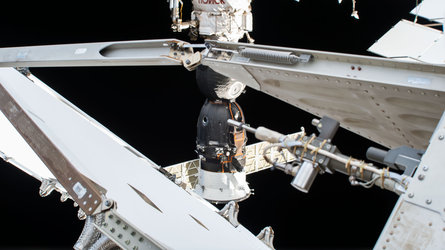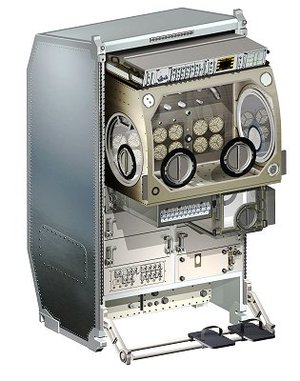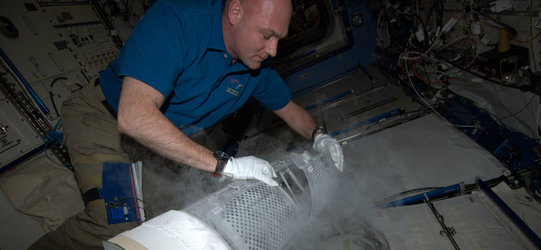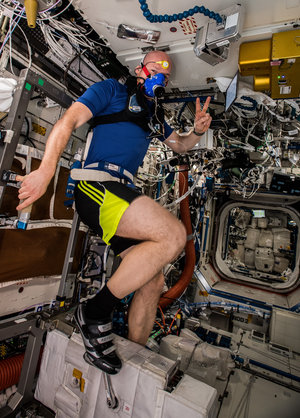Space Station science and spring-cleaning special
The arrival of NASA astronauts Bob Behnken and Doug Hurley in the first crewed SpaceX Dragon on 31 May brought the Space Station crew to five and heralded the start of a new month of science 400 km above our heads.
Proximity and plasma
The current situation with COVID-19 on Earth meant a few necessary adaptations for support teams on the ground – including a new way of working together for principal investigators (PI) of the long-standing Russian-European investigation Plasma Kristall 4 (PK-4).

Rather than travelling to the CADMOS centre in Toulouse, France, to support the experiment together on console, one researcher worked from Russian mission control centre TsUP while the other was stationed at the Columbus Control Centre (Col-CC) in Oberpfaffenhofen, Germany to complete the 10th campaign of PK-4 on the Space Station.
PK-4’s focus is low temperature gaseous mixtures known as ‘complex plasmas’ made up of ions, electrons, inert gas and micro-particles. Due to the strong influence of gravity on the micro-particles, most experiments on complex plasmas are strongly distorted or even impossible on Earth.
Plasma for the PK-4 experiment is created with neon or argon gas in tubes that give particles an electrical charge. The experiment allows researchers across the world to better understand how an object melts, how waves spread in fluids and how currents change at the atomic level.
In fact, a team of scientists has already made use of the know-how gained from developing the experiment to build plasma devices that disinfect wounds at room temperature. This revolution in healthcare has many practical applications, from food hygiene to treatment of skin diseases, water purification and even neutralising bad odours.
Space renovations
Europe’s Columbus laboratory got a spruce up this month as Bob and Doug moved the European Drawer Rack-2 (EDR-2) into its new position.
Rather than replacing the existing European Drawer Rack, EDR-2 is designed to run in parallel, providing even greater opportunities for science in space.
The addition is part of a comprehensive upgrade of Columbus to offer faster, easier and more flexible access for researchers on Earth. It does so by offering more room to support and operate experiments by supplying power, data communication, cooling and nitrogen, and venting waste gasses.


Access the video
The first three experiments planned for installation in EDR-2 include a metal 3D printer, an instrument investigating granular materials and a facility looking into heat transfer.
Bob and Doug manoeuvred the large fridge-sized rack into Columbus – a feat that would be much more difficult on Earth – and shifted the European Transport Carrier (ETC) out. Having served its time as a workbench and stowage facility, ETC was transferred to the Japanese HTV 9 spacecraft and will now be trashed.
Steady science and spacewalks

Among other experiments operational in June were some familiar favourites. The Atmosphere-Space Interactions Monitor (ASIM) continued to observe a wide variety of phenomena in Earth’s upper atmosphere.
Data was also downlinked from the Dosis-3D radiation monitoring experiment, and the Foam Coarsening experiment continued to study the behaviour of foams to help in the construction of light-weight and sturdy aerospace structures and new shielding systems for diagnostic radiology equipment in hospitals.
Not content to simply work inside the Space Station, Chris Cassidy and Bob Behnken took a walk outside, marking the start of a fresh series of spacewalks. The spacewalking duo exited the Quest airlock on Friday 26 June in the first of two scheduled spacewalks to replace batteries on one of two power channels on the far starboard truss (S6 Truss). The second spacewalk was completed Wednesday 1 July.














 Germany
Germany
 Austria
Austria
 Belgium
Belgium
 Denmark
Denmark
 Spain
Spain
 Estonia
Estonia
 Finland
Finland
 France
France
 Greece
Greece
 Hungary
Hungary
 Ireland
Ireland
 Italy
Italy
 Luxembourg
Luxembourg
 Norway
Norway
 The Netherlands
The Netherlands
 Poland
Poland
 Portugal
Portugal
 Czechia
Czechia
 Romania
Romania
 United Kingdom
United Kingdom
 Slovenia
Slovenia
 Sweden
Sweden
 Switzerland
Switzerland




















































